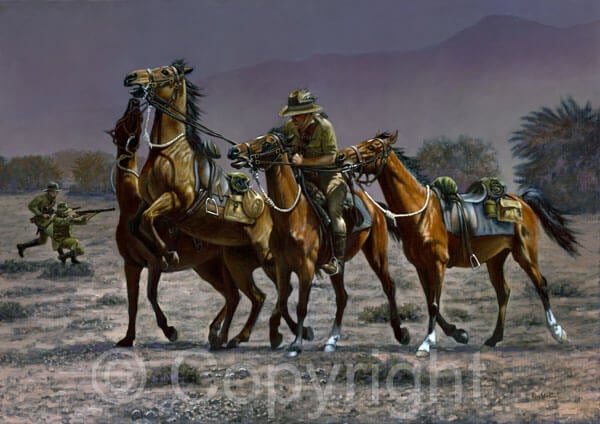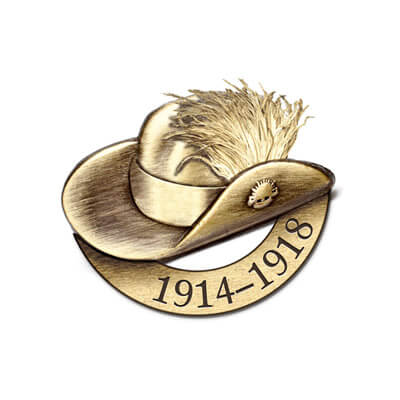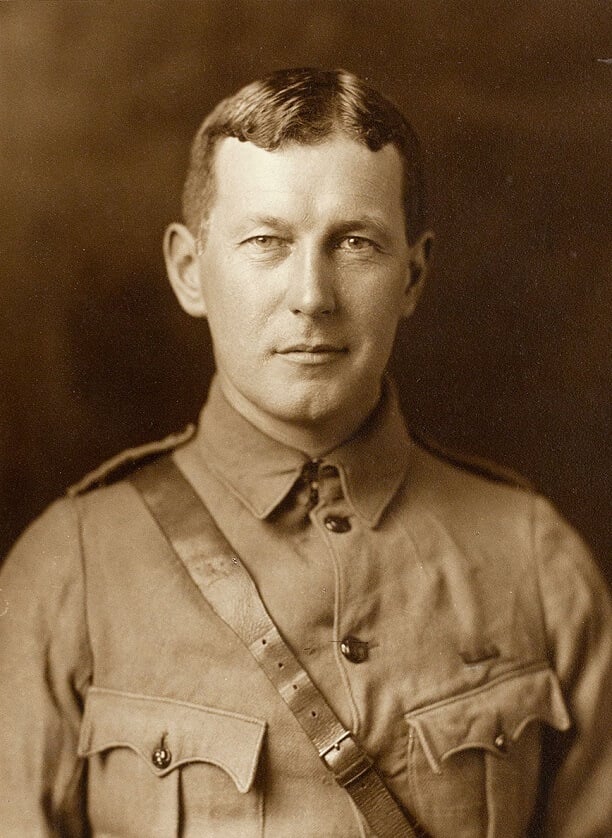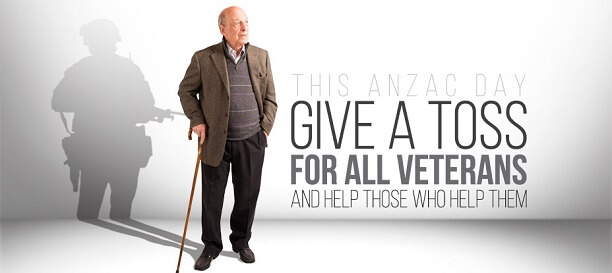
A story worth sharing
Image: 'The Horse Holder' used with permission of artist Ron Marshall
The Light Horse has a place in the hearts of all Australians. Its mere mention conjures images of lads with a cocky swagger and a proud plume in their hats. But it also evokes a sense of great horsemanship and courage, and of a powerful bond between men and their trusted Waler mounts.
As Mounted Infantry the light horse were not a cavalry, rather they had to do the same job as all infantry, but with increased mobility. This allowed them to be tasked with reconnaissance, screening patrols and protection of other troops, whether halted or on the march, from surprise attack. In battle, they would operate in sections of four. When close enough to join the fight one rider would lead all horses to safety and either stay with them – ready to bring them back to his mates for a quick getaway, or he would secure them and join the fight himself. 
While most in the light horse served 1917 in the deserts of Egypt and Palestine, men and mounts also fought on the Western Front at Bullecourt, Ypres and Passchendaele. Yet the most famous light encounter by the light horse is the Charge at Beersheba in October 1917. This was a courageous and bold attack. Eight hundred men of the 4th Light Horse Brigade galloped across miles of open desert, bayonets in hand to storm the town. The Turkish defenders had expected the troops to dismount and fight on foot but instead the 4th and 12th Light Horse regiments charged on – leaping the defenders and taking the town and its vital water wells. This speedy victory turned the tide in the Allied push into Gaza and Jerusalem.
In the Anzac Centenary, we are proud to commemorate their courage. Our Beersheba collection remembers the 100th anniversary of this historic charge. See the collection here.











